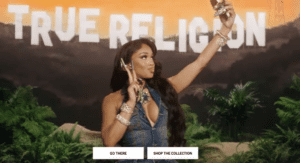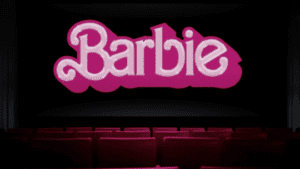You can track the UV index, and the SPF getting swabbed from beach to poolside. You can even estimate the calories consumed times the number of light beer bottles piling up. But quantifying a brand’s ROI for Spring Break sampling, events and tours? That’s a tough one.
Spring Break locales like Panama City Beach, FL, South Padre Island, TX, and Cancun, Mexico, are jam-packed with college kids in March, so brands targeting 18- to 24-year-olds set up shop where the boys (and the girls) are. With the potential to reach 500,000-plus students, brands have become a major feature in the Spring Break landscape, investing millions of dollars each year at such locales. Sure, students bring back a great tan and lots of swag, but how do brands make sure they don’t get burned?
Agencies that specialize in teen and college markets, such as Boston-based AMP, say clients don’t mind less-than-accurate tracking of results.
“Some of the brands that come to us may not have a college marketing initiative, but they know that this is the largest and most cost-effective way to reach that demographic,” says John Costello, VP-sponsorship and event sales for AMP. “It’s hard to track the results because Spring Break has a viral aspect. Students will go back to campus and tell their friends all about their experience, and that will spread.”
That’s also why many brands choose to target Spring Break sites instead of running mobile tours, Costello says. Students from across the country bring product info back to school, relaying the same message at a fraction of the cost of a tour.
“You may not be able to reach all the kids on one campus with a mobile tour; you may not even reach them all if you were to buy media on each campus,” Costello says. “You may only reach about 20% of a campus with a mobile tour, and that’s about the same amount of college students that go on Spring Break.”
In some cases, word on brand experience spreads before the kids head back to the books. Verizon Wireless, which recently re-signed with AMP as a sponsor of its 2005 roster, hosted the Verizon Wireless Latitude Pavilion in Spring 2004. Students meet their friends, relax, play interactive games and enjoy refreshments on site. They may also phone home from the Verizon Wireless Connect Home Call Center, letting parents know they are safe or reminding friends back home of the fun they’re missing.
Results may be hard to track, but exit polls help agencies and brands decide how to handle their future promotions. AMP Insights, a division of AMP, interviewed students in Panama City Beach in March 2003, focusing on the marketing initiatives. They learned that students spend most of their time at the beach, with downtime (and pre-partying) in the hotel or condo; meals and food are an afterthought; most have limited funds and like drink specials or no cover charges when going out.
Activating a sponsorship is key. “If you’re just going to put up a banner, you might as well not be there,” says Matt Britton, executive VP-sales and marketing for Mr. Youth, New York. “A lot of marketers try to only put up banners and give away T-shirts, but so many brands do that, it won’t move the needle. But if you create a relationship, then you really got something.”
Britton should know. His firm launched Victoria’s Secret’s spin off for young-adults, Pink, in South Beach, FL, during Spring Break 2004. In addition to a three-story high gift box (in pink, natch), ads, postings, street teams, aerial signs, hotel collateral and p.r. hyped a five-day countdown. A surprise fashion show and live concert by No Mercy drew 5,000 Spring Breakers on March 17. Pink brand reps passed out gift cards and hosted nightclub parties afterwards.
“You don’t jam a square peg into a round hole,” says Britton. “We do completely customized promotions to match sponsors with an event. Last year we had Samsung as a client, and they were sponsoring the Olympics. So we added a Toga party to their promotion.”
For sponsors spending the entire month of March at break locales, events can also be tweaked after week one if things aren’t going quite as planned.
“Spring break will always be about the students having fun in the sun, partying and meeting new people,” says Richard Tarzian, president and CEO of Manasquan, NJ-based event marketer Intercollegiate Communications. “Our job is to entertain and educate them while they are there. Activities need to be adventurous, cool, new or one-of-a-kind, tied into concerts and music, and cutting-edge technology.”
Contrary to the skeptics, Tarzian says college students do indeed remember who sponsored the Spring Break events they attend. His partnership with Chicago-based Relay Sports and Entertainment, which handles the U.S. Army’s promotions, is proof positive.
“The climbing tower that was sponsored by the U.S. Army was known by the Spring Breakers as the Army Adventure Tower, and their Sports Lounge was referred to as the Army Sports Lounge,” says Tarzian.
And it isn’t all about the beach and the bars. A client’s goals can also be accomplished through media buys with the hotels. For example, elevator wraps, room key swipe cards, lobby floor clings, column wraps and bus wraps, when tastefully done, can be effective, especially for entertainment clients.
In 2004, DreamWorks, LLC used AMP agency to promote its summer Will Ferrell hit Anchorman: The Legend of Ron Burgundy on elevator doors and buses. Paramount Pictures had AMP cling the Lindsey Lohan flick Mean Girls on hotel room mirrors and room key swipe cards.
Paramount and AMP used similar tactics to promote the DVD release of the Jack Black comedy School of Rock.
Even if events are difficult to track, Britton notes that marketers still need to gather information from Spring Breakers for the result to be effective.
“It’s a great way to reach prospects,” says Britton. “Smart Spring Break marketers use that opportunity to collect data to drive students back to retail. You need to create some sort of a post-Spring Break CRM initiative, like e-mailing the leads a local, relevant offer with a discount.”




 Network
Network




